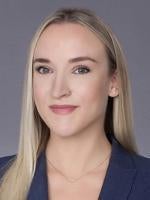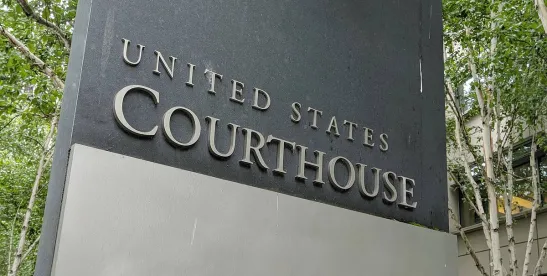After ten years of litigation, the Federal Circuit found that the district court conducted an improper collateral estoppel analysis and upheld ParkerVision’s position on each of the appealed issues.[1]
Background
In 2011, ParkerVision sued Qualcomm alleging that it infringed its patented technology for down-converting electromagnetic signals using “energy sampling.” A jury rejected Qualcomm’s invalidity claims and found that Qualcomm “directly and indirectly” infringed multiple claims across four patents. Qualcomm then filed a motion for judgment as a matter of law (JMOL) of non-infringement, which the district court granted in part but denied the motions relating to invalidity. Both parties appealed and the decision, which the Federal Circuit affirmed in ParkerVision I.
ParkerVision filed a second infringement suit in 2014, involving different but related patents. The 2014 action involved patents with claims related to down-conversion (“receiver claims”) and up-conversion (“transmitter claims”). The case experienced several delays due to Qualcomm’s IPR challenges to patent validity. The district court later granted Qualcomm’s motion for summary judgment of non-infringement based on collateral estoppel from ParkerVision I and excluded certain expert testimony from ParkerVision in a Daubert ruling.
Issues
ParkerVision raised three issues on appeal: (1) whether the district court properly granted summary judgment of non-infringement based on collateral estoppel from ParkerVision I; (2) whether the district court correctly applied collateral estoppel to prevent its validity expert’s testimony, and (3) whether the district court properly excluded its infringement experts’ testimony as unreliable.
Holding
The Federal Circuit agreed with ParkerVision on all three issues. The Federal Circuit vacated the district court’s summary judgment of non-infringement, reversed the exclusion of ParkerVision’s expert testimonies, and remanded the case for further proceedings.
Reasoning
First, collateral estoppel, or issue preclusion, is evaluated according to regional circuit law, with the Eleventh Circuit requiring four elements: identical issue, actual litigation, critical determination, and full and fair opportunity to litigate. The parties agreed on all elements except whether the infringement issue in the 2014 Action is identical to that in the 2011 Action. The accused products in both actions operate similarly, necessitating a comparison of the claim scopes to determine if they are materially the same. However, the district court did not conduct claim construction or analyze intrinsic evidence, relying instead on Qualcomm’s expert reports, which it deemed “unrebutted.” The district court’s reliance on extrinsic evidence, particularly expert opinion, without considering intrinsic evidence, was erroneous. ParkerVision’s expert opined on material differences in claim scope, suggesting the district court’s conclusion of no material dispute was incorrect. Qualcomm, as the party invoking collateral estoppel, bore the burden of proving the identity of the issues, and the district court’s approach was flawed in not conducting claim construction.
Second, the Federal Circuit reversed the district court’s exclusion of ParkerVision’s validity expert because it disagreed with the trial court’s findings on prior art. The court explained that findings from an Inter Partes Review (IPR) do not collaterally estop ParkerVision from arguing validity in district court, as the burden of proof in IPR is lower than in district court. Qualcomm needed to prove invalidity by clear and convincing evidence in district court, a burden it has not yet met.
Third, the Federal Circuit found that the district court erred in requiring testing and simulation for expert testimony reliability. The court highlighted that expert opinions can be based on schematics and technical documents, which are standard in the field, and that the district court should have allowed the jury to evaluate the experts’ opinions.
FOOTNOTES



 />i
/>i

